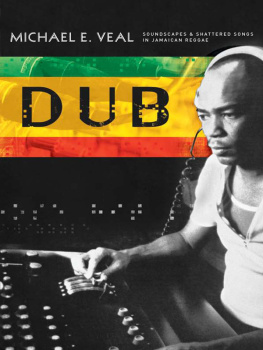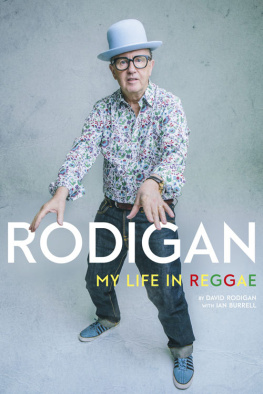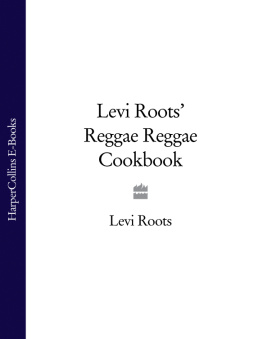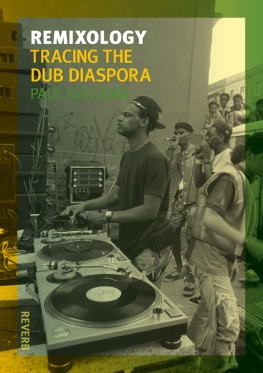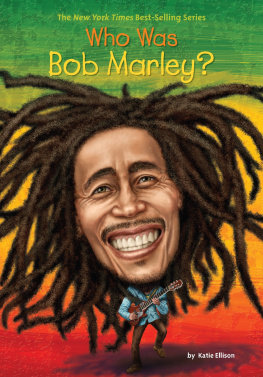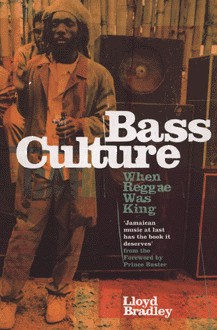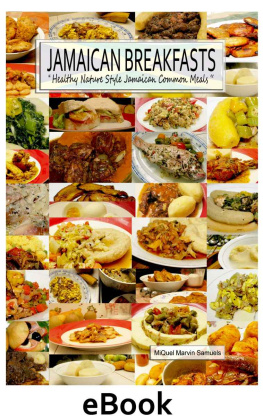
Dub
MICHAEL E. VEAL

Dub
SOUNDSCAPES AND SHATTERED SONGS IN JAMAICAN REGGAE

WESLEYAN UNIVERSITY PRESS
Middletown, Connecticut
Published by Wesleyan University Press, Middletown, CT 06459
www.wesleyan.edu/wespress
2007 by Michael E. Veal
All rights reserved
Printed in the United States of America
5 4 3 2 1
This book has been published with the assistance of the Frederick W. Hilles Publication Fund of Yale University.
We also gratefully acknowledge assistance from the Manfred Bukofzer Publication Endowment Fund of the American Musicological Society.
Library of Congress Cataloging-in-Publication Data
Veal, Michael E., 1963
Soundscapes and shattered songs in Jamaican reggae / Michael E. Veal.
p. cm. (Music/culture)
Includes bibliographical references (p. ), discography (p. ), and index.
ISBN-13: 978-0-8195-6571-6 (cloth : alk. paper)
ISBN-10: 0-8195-6571-7 (cloth : alk. paper)
ISBN-13: 978-0-8195-6572-3 (pbk. : alk. paper)
ISBN-10: 0-8195-6572-5 (pbk. : alk. paper)
1. Dub (Music)JamaicaHistory and criticism. I. Title.
ML3532.V43 2007
781.646'097292dc22
2006037669
Cover illustration: King Tubby at the board in his studio. Photograph by Peter Simon.
While the material invention of instruments was still in the hands of a few, their imaginative invention and reinvention were profitably and dangerously in the hands of the many who might expand their significance beyond an inventors wildest dreams or even against his wishes.
James Lastra 2000
It happened like this Because of the development of new recording technology, a whole host of compositional possibilities that were quite new to music came into existence. Most of these had to do with two closely related new areasthe development of the texture of sound itself as a focus for compositional attention, and the ability to create with electronics virtual acoustic spaces (acoustic spaces that dont exist in nature). I wanted to suggest that this activity was actually one of the distinguishing characteristics of new music, and could in fact become the main focus of compositional attention. [I]t was clear to me that this was where a lot of the action was going to be people like me just sat at home night after night fiddling around with all this stuff, amazed at what was now possible, immersed in the new sonic worlds we could create. [I]mmersion was really the point: we were making music to swim in, to float in, to get lost inside.
Brian Eno 1996
Space is a prime symbol of the aspirations of a people, permeating architecture, music, and mathematics.
Marcos Novak, quoted in Moser 1996
Contents

Illustrations

Figures 124 follow page 172.
Acknowledgments

My first thanks to the two friends who made me aware of dub music back in 1983, Tony Sims and Willy D. Wallace. I also acknowledge everyone who was interviewed for this book (their names are listed in the bibliography) with particular mention of Michael Mikey Dread Campbell, Clive Chin, Dave Hendley, Edward Bunny Lee, Desmond Shakespeare, and Bobby Vicious for their assistance at various stages of this project.
Special thanks to Gage Averill, who advised this work through its dissertation stage (2000) at Wesleyan University, and who provided my entry into academia. I also thank Mark Slobin and Su Zheng. Others at Wesleyan who proved invaluable: Hope McNeil of the music department; Allison M. Insall, Beth Labriola, and Barbara Schukoske of the Office of Graduate Student Services; and Dianne Kelly, Alec McLane and Randy Wilson of Olin Library.
Colleagues and friends at various institutions who provided feedback, an exchange of music, ideas, or other valuable information at various stages of this work: Carolyn Abbate (Princeton University), Kofi Agawu (Princeton University), Tahmima Anam (Harvard University), Harris Berger (Texas A&M University), Franya Berkman (Lewis & Clark College), Lucia Cantero (Yale University), Eric Charry (Wesleyan University), Michael Denning (Yale University), Paul Gilroy (Yale University), Lori Gruen (Wesleyan University), Jackson Lears (Rutgers University), Peter Manuel (CUNY), Alondra Nelson (Yale University), and Marc Perlman (Brown University).
I thank my colleagues in the Department of Music at Yale University, and in the Department of African-American Studies at Yale, especially Ellen Rosand, Patrick McCreless, Sarah Weiss, John Halle, Paul Gilroy, Vron Ware, Hazel Carby, John Szwed, Robert Farris Thompson, Alondra Nelson, Elizabeth Alexander and Kellie Jones. I appreciate the efforts of the administrative staff in the Department of Music: Elaine Lincoln, Linette Norbeau, Melissa Capasso, Mary-Jo Warren, and Sharleen Sanchez; and the administrative staff in the Department of African-American Studies: Geneva Melvin and Janet Giarrantano.
Several students who read the manuscript at various stages and offered valuable commentary and/or music: Lucia Cantero, Hannah Appel, Emily Ferrigno, Richard Leiter, and Daniel Sussman. Matthew Byrnie of Routledge Press and Suzanna Tamminen and Eric Levy at Wesleyan University Press were generous with time and counsel.
Finally, I thank Gary Tomlinson of the Department of Music at the University of Pennsylvania.
I am grateful to my parents, Henry and Yvonnecris Veal; and all the members of the Veal, Smith, Coleman, and Tyson families. And I give a huge shout-out to those friends who have seen me through the writing process: Fleetwood, Catfish Jr. Kennedy, R2, Jules, The Irascible Imp, Jon, Greg, A.J., Grubes, Blass, Maria V., Norbu, Ike, Bud Struggle, Nadia, Groove Maneuvers, Damon and Naomi and Jay Hoggard, Goldi, Lauralito, Yomski, Romily, Ingi, Rachael, Suzu, The Quinto Kid, Julius, Luke, Mat, Steve, Tony L., Maya, Trev, Mojay, Tony and Silvie Allen, Alexandre, M. Z., Sheron, Miriam, Sharan.
Those in Jamaica who offered assistance include Canute Salmon and family; Junior Bailey; Cheryl Chambers at Jammys; Daniel Jackson, Stephanie Black; Allan Karr; and Tenny and Launa Graham. I extend particular thanks to Drs. Carolyn Cooper and Cecil Gutzmore of the University of the West Indies in Mona for their warmth, kindness, and hospitality during my visits to Jamaica. I also thank Hannah Appel for all her help during my trips to Kingston.
Others in the United States to whom I offer thanks include the staff at Cutlers Records in New Haven, Connecticut; Monica Wint; Geoff Albores; Dressells Service Station (Granby, Massachusetts); Mystery Train Records (Amherst, Massachusetts); Newbury Comics (Amherst, Massachusetts); Mars Records (Boston, Massachusetts); and Dave Rosencrans of Experience Music Project (Seattle, Washington). I would also like to thank James Dutton of Motion Records.
Partial support for this research was provided by a Five College Fellowship for the academic year 199697, during which I was in residence in the Department of Music of Mount Holyoke College. I acknowledge the music department, as well as Carol Angus, Lorna Peterson, and Leslie Taylor of Five Colleges, Inc. Additional funding was provided by Yale University through a Griswold Travel Research Grant in 2000, and a Morse Junior Faculty Fellowship in 20032004. I also acknowledge the Department of Music at New York University, where I taught for the academic year 199798.
Next page
